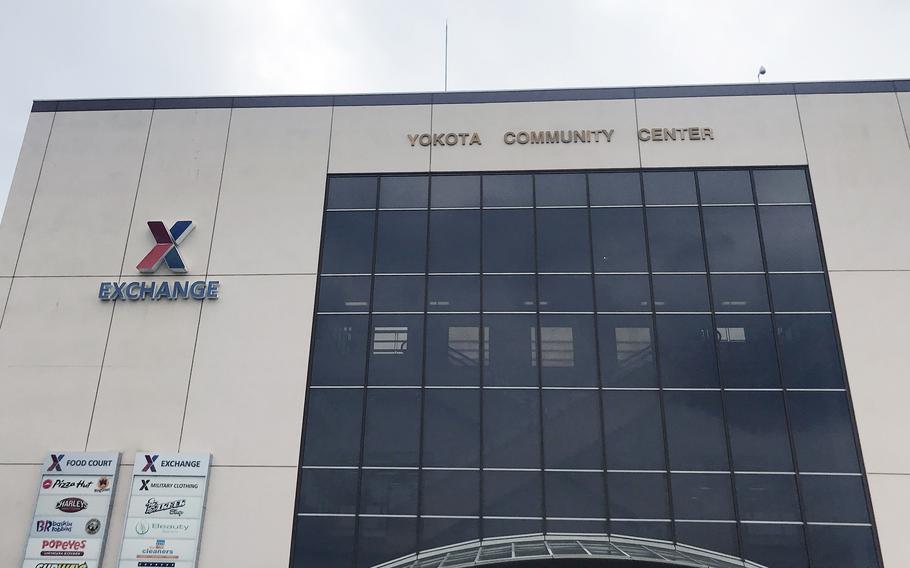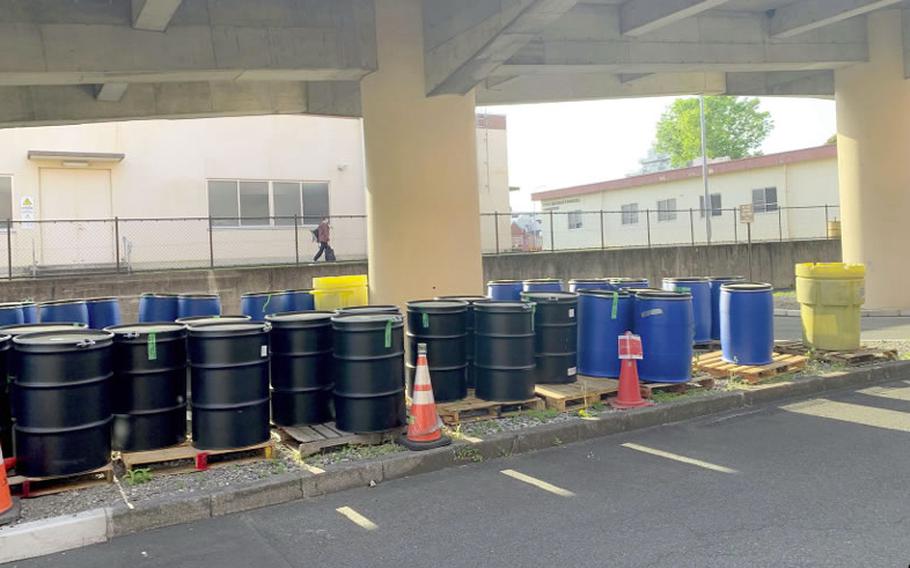
The Yokota Community Center houses the commissary, base exchange and food court at Yokota Air Base in western Tokyo. (Seth Robson/Stars and Stripes)
YOKOTA AIR BASE, Japan — U.S. officials have confirmed that about 250 gallons of contaminated water leaked at this airlift hub in 2023, a disclosure that is drawing sharp criticism from local governments for coming more than two years after the incident.
The Tokyo Metropolitan Government said in a statement Wednesday it received details about the leak from U.S. officials via the North Kando Defense Bureau, an arm of Japan’s Ministry of Defense, a day earlier. The information was also shared with six municipalities near Yokota: Akishima, Fussa, Hamura, Mizuho, Musashimurayama and Tachikawa.
The leak happened on Jan. 25, 2023, at the loading dock of the Yokota Community Center, which houses the commissary, base exchange and food court.
“Approximately 250 gallons of water containing PFOS and PFOA leaked into the entrance of the fire extinguishing system at the receiving dock of the base store at Yokota Air Base from a pressurized pipe that froze and burst due to cold weather conditions,” U.S. officials said, according to the Tokyo government’s statement.
PFOS and PFOA are part of a group of synthetic chemicals known as PFAS, which do not break down easily and can build up in the environment and human body. Animal studies suggest that exposure may increase the risk of tumors in the liver, testicles, breasts and pancreas, according to the American Cancer Society.
U.S. Forces Japan announced in November that it had destroyed its last remaining stocks of firefighting foam containing the toxins.
The Tokyo government said the Yokota leak came from a Japanese-designed foam fire-suppression system. U.S. officials explained that “some of the old foam was not drained from the pipes when the old foam was replaced with a new one,” the statement said.
The officials said the leaked water was contained within the base and later incinerated at a facility authorized to handle such waste, according to the statement. To prevent similar incidents, they said piping in other fire-suppression systems has been either insulated against freezing or depressurized.
The leak was first revealed in a July 10, 2023, report by the Tokyo Shimbun, which cited unnamed sources. The municipalities near Yokota say the U.S. and Japanese governments failed to notify them at the time, despite repeated inquiries.

PFAS-contaminated water was stored in drums behind the Yokota Community Center in 2023 because the designated hazardous waste site was full, according to a Defense Department inspector general's audit. (Department of Defense)
Yokota’s public affairs office did not respond to an email requesting comment Thursday. During a follow-up phone call Friday, a base spokesman, Master Sgt. Nathan Allen, referred questions to USFJ, which did not immediately respond to phone and email queries.
One Wednesday, the six municipalities sent a letter to Col. Richard McElhaney, commander of Yokota’s 374th Airlift Wing, as well as to Japanese Defense Minister Gen Nakatani and the North Kanto Defense Bureau, criticizing the delayed communication.
“In particular, with regards to the incident that occurred in January 2023, despite our repeated requests for the facts to be clarified, it is extremely regrettable that the information was made public and reported by the media without the information being provided and that the information was provided to the Tokyo Metropolitan Government and local governments surrounding the base two years after the incident and more than a month after it was made public,” the letter stated.
The local governments called on U.S. and Japanese officials to investigate whether more residual PFAS remains in other systems at the base and to share the findings. They also urged better maintenance, stronger inspection procedures, and faster public communication about environmental risks.